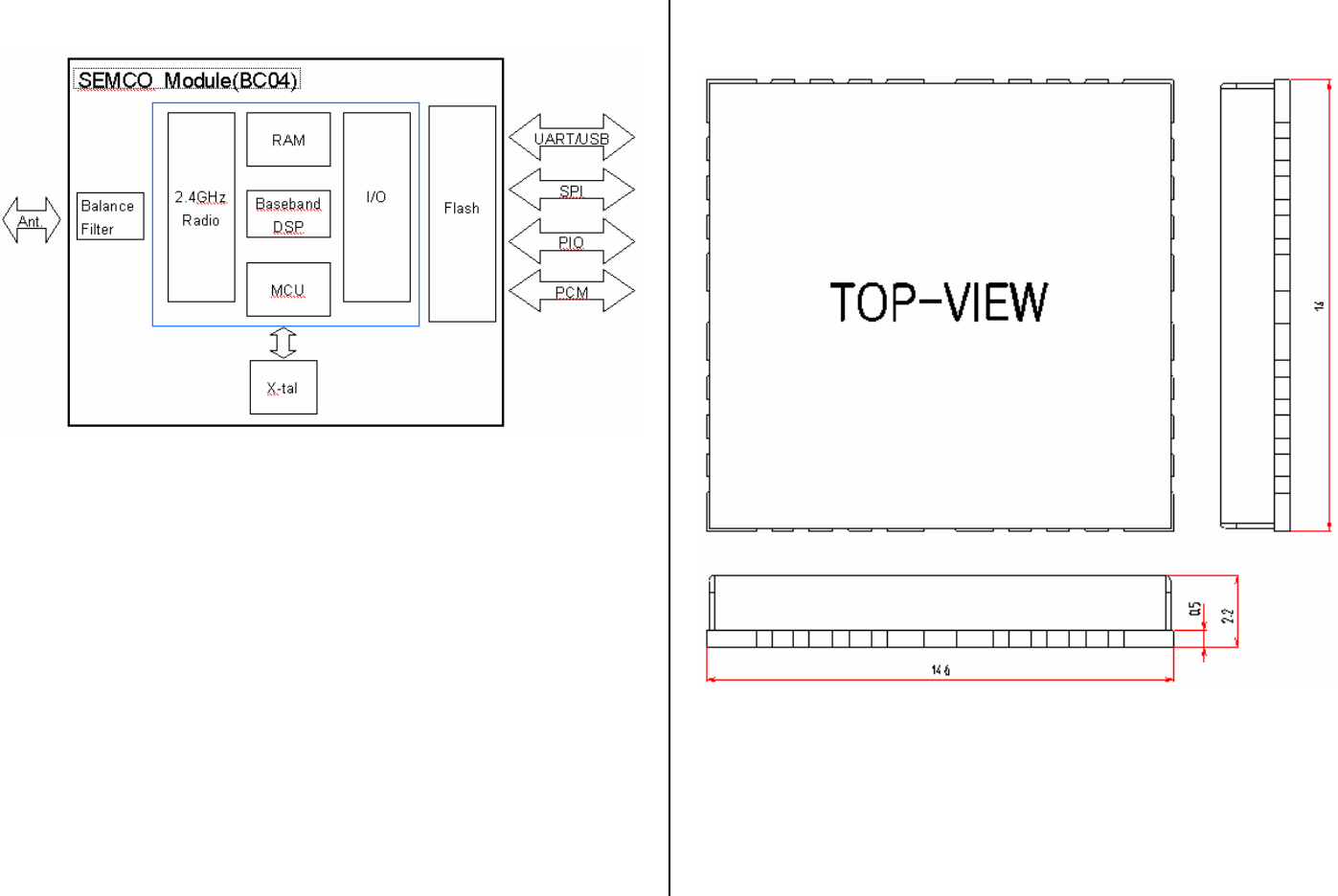Samsung Electro Mechanics BTEP45C2GA Bluetooth Module User Manual BTEP45C2GA User manual
Samsung Electro Mechanics Bluetooth Module BTEP45C2GA User manual
Manual

1
- USER MANUAL -
Contents
1. Overview
2. Major Features
3. External
4. Module Block & Interfaces
5. Demension
6. FCC & Industry Canada Regulatory Compliance
1. Overview
This specification covers Bluetooth module(class-2), which complies
with Bluetooth specification version 2.0 and integrates RF, Baseband,
and Flash in a small package. This module has deployed CSR's BC04
External(BC417143B) chipset.
2. Major Features
-, Bluetooth Spec. v2.0 Complaint
-, Class 2 Level Output Power Available (Max. 4dBm)
-, Full Speed Bluetooth operation with Piconet and Scatternet
support
-, Support of Low power modes: Park, Sniff and Hold
-, 8 Mbit of Flash
-, UART, USB, SPI Interface Available
3. External Appearance
1) Marking should be in clear and distinguishable characters.
- No dim, spread, cut and erased marking.
2) Appearance should be managed as specified below:
- No press (depth 0.1mm, length 5mm under).
- No different substance, corrosion, distortion, discoloration
etc.
- Maintenance of the original condition
(Case's edge, binding between cover and chassis).
- Size must be as drawn in physical dimension diagram.

4. Module Block & Interfaces
5. Dimension
The dimension is 14.6mm x 14.0mm x 2.2mm(Typ.)

6. FCC & Industry Canada Regulatory Compliance
FCC & Industry Canada Regulatory Compliance
This device complies with Part 15 of the FCC Rules. Operation is subject to
the following two conditions: (1) this device may not cause harmful
interference, and (2) this device must accept any interference received,
including interference that may cause undesired operation.
Your mobile device is a low power radio transmitter and receiver. When it is
ON, it receives and also sends out radio frequency (RF) signals. In August
1996, the Federal Communications Commission (FCC) adopted RF
exposure guidelines with safety levels for mobile devices. Those guidelines
are consistent with safety standards previously set by both U.S. and
international standards bodies: American National Standard Institute
(ANSI), National Council of Radiation Protection and
Measurements(NCRP), and International Commission on Non-Ionizing
Radiation Protection (ICNRP). Those standards were based on
comprehensive and periodic evaluations of the relevant scientific literature.
The design of your phone complies with the FCC guidelines and applicable.
Statement according to FCC part 15.105
NOTE: This equipment has been tested and found to comply with the limits
for a Class B digital device, pursuant to Part 15 of the FCC Rules. These
limits are designed to provide reasonable protection against harmful
interference in a residential installation. This equipment generates, uses
and can radiate radio frequency energy and, if not installed and used in
accordance with the instructions, may cause harmful interference to radio
communications. However, there is no guarantee that interference will not
occur in a particular installation. If this equipment does cause harmful
interference to radio or television reception, which can be determined by
turning the equipment off and on, the user is encouraged to try to correct
the interference by one or more of the following measures:
• Reorient or relocate the receiving antenna.
• Increase the separation between the equipment and receiver.
• Connect the equipment into an outlet on a circuit different from that to
which the receiver is connected.
• Consult the dealer or an experienced radio/TV technician for help.
Statement according to FCC part 15.21
Modifications not expressly approved by this company could void the user's
authority to operate the equipment.
RF exposure FCC
This device and its antenna must not be co-located or operating in
conjunction with any other antenna or transmitter.